The Command Prompt is a versatile tool in Windows 11 that allows users to execute a variety of commands. By default, when you launch Command Prompt, it opens in the current user's directory (e.g., C:\Users\YourName>). However, there are times when you might need to open it directly within a specific folder or directory. Doing so can save time and effort, especially if you need to run commands in that particular location.
Open Command Prompt Inside a Folder Using File Explorer
A quick and simple way to open Command Prompt directly in any folder is through File Explorer. Follow these steps:
- Open File Explorer and navigate to the folder where you want to open Command Prompt.
- Click on the address bar at the top of the window.
- Type
cmdinto the address bar and pressEnter.

The Command Prompt will open directly within the selected folder.
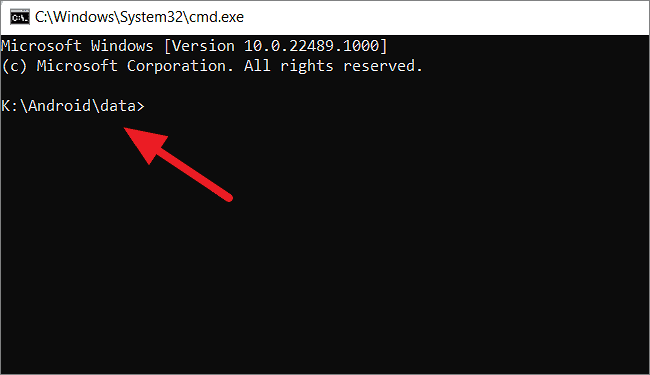
Open Command Prompt in a Folder Using the Right-Click Context Menu
You can also use the right-click context menu to open Command Prompt in a specific folder. Here's how:
- Navigate to the folder where you want to open Command Prompt.
- Right-click on the folder background (not on a file).
- Select Open in Windows Terminal from the context menu.

By default, Windows Terminal opens with PowerShell. To have it open Command Prompt instead, you need to change the default profile:
- Open Windows Terminal by right-clicking the Start button on the taskbar and selecting Windows Terminal.
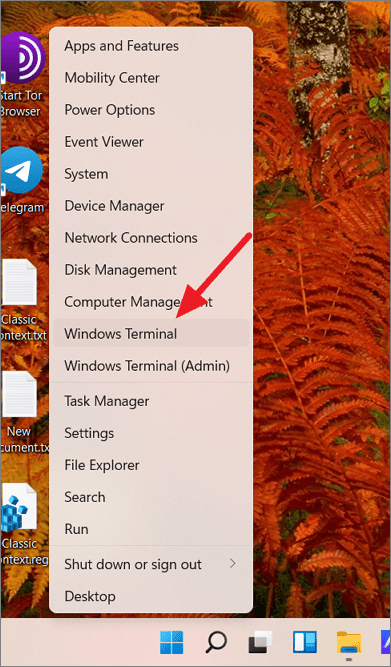
- In Windows Terminal, click the downward arrow next to the plus tab button and choose Settings.

- In the Settings window, select the Startup tab.
- Under Default profile, select Command Prompt from the drop-down menu.
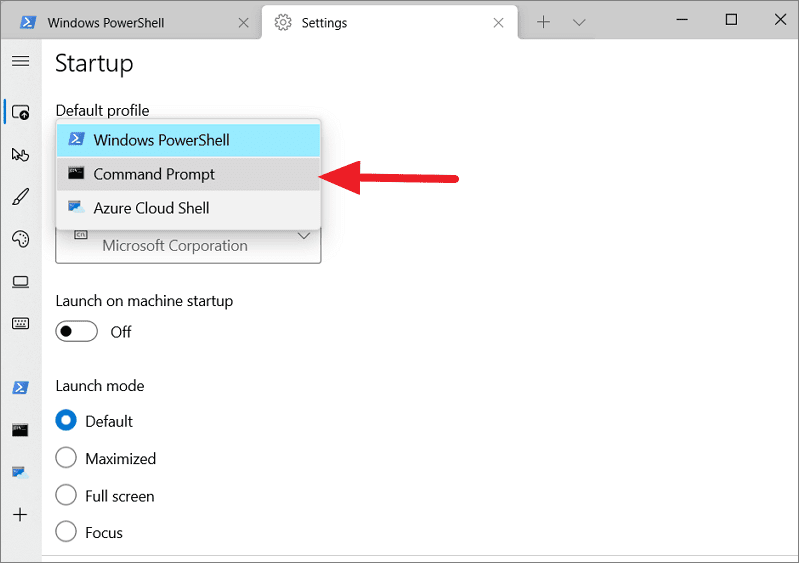
- Click the Save button at the bottom right corner.

Now, when you use the Open in Windows Terminal option, it will launch Command Prompt in the selected folder.
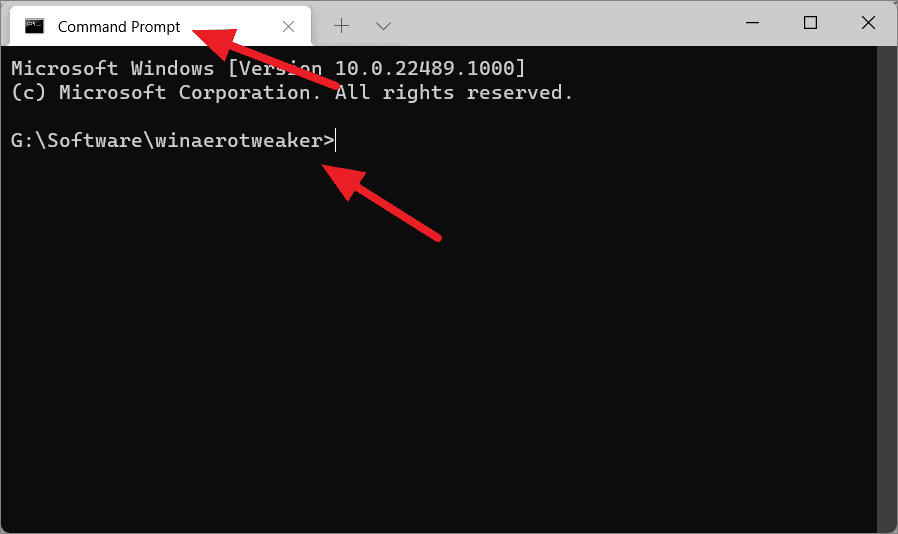
Add "Open Command Window Here" to the Context Menu Using Registry Editor
If you prefer to have the Open command window here option directly in the right-click context menu, you can add it by modifying the Windows Registry. Caution is advised when editing the registry. Here's how:
- Press
Win + Rto open the Run dialog. - Type
regeditand pressEnterto open the Registry Editor.

In the Registry Editor, navigate to:
Computer\HKEY_CLASSES_ROOT\Directory\shell\cmd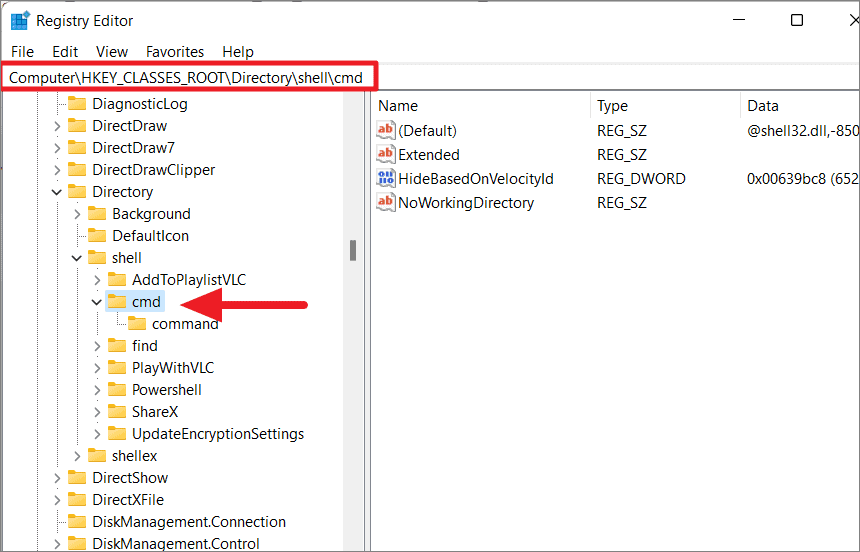
- Right-click on the
cmdfolder and select Permissions.

- In the Permissions window, click Advanced.
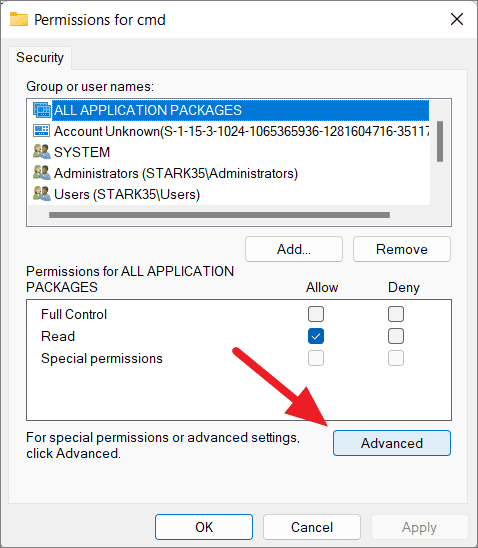
- Next to the Owner label, click Change.

- Enter your username in the box and click Check Names.
- Click OK to confirm.
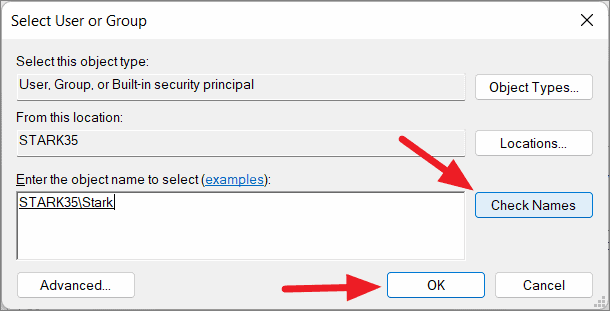
- Check the box labeled Replace owner on subcontainers and objects, then click Apply and OK.
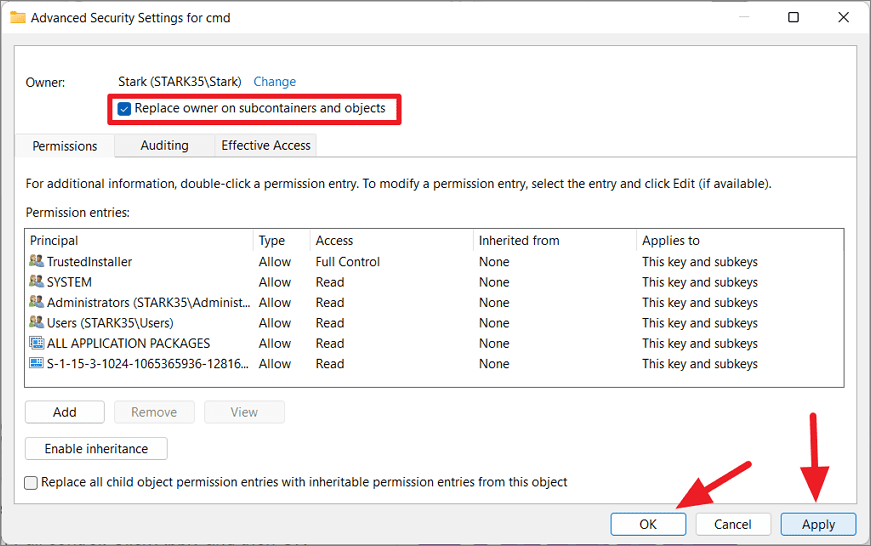
- Back in the Permissions window, select Administrators under Group or user names.
- Check the Full Control box under Allow, then click Apply and OK.
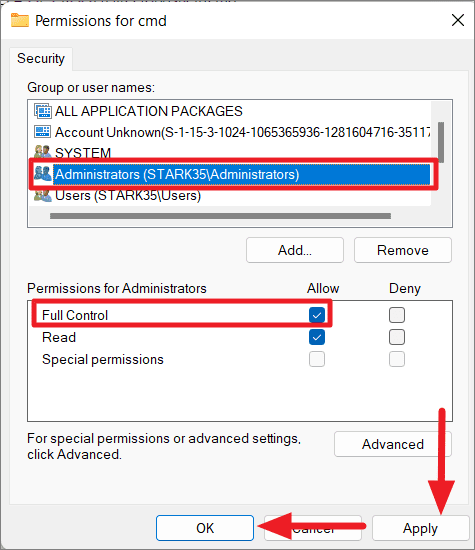
- In the Registry Editor, rename the
HideBasedonVelocityIdDWORD toShowBasedonVelocityIdby right-clicking it and selecting Rename.
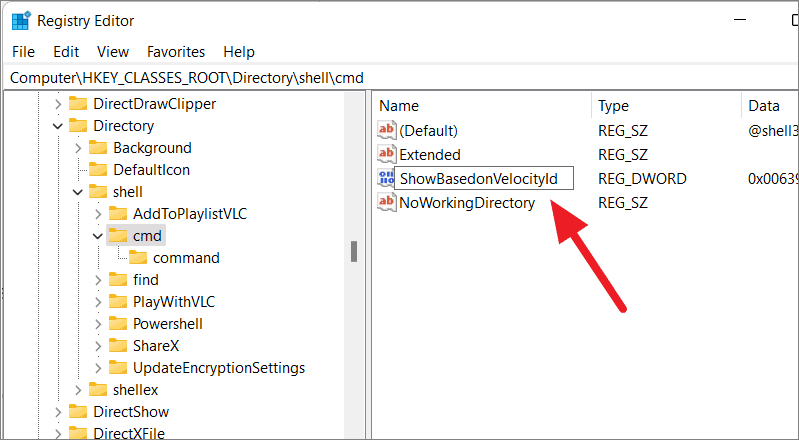
The Open command window here option will now be available in the context menu. To use it:
- Right-click inside any folder.
- Select Show more options.
- Click on Open command window here.
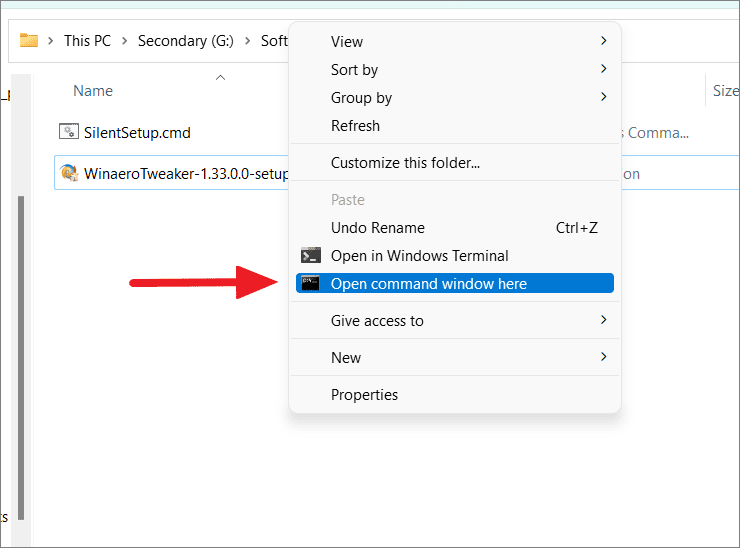
Command Prompt will open directly in that folder.
Add "Open Command Window Here" Using a Registry File
If you're uncomfortable editing the registry manually, you can create a registry file to automate the process:
- Save the file with a
.regextension (e.g.,AddCommandPrompt.reg) and choose All Files in the Save as type menu.
Open Notepad and paste the following code:
Windows Registry Editor Version 5.00
[HKEY_CLASSES_ROOT\Directory\shell\cmd]
"HideBasedOnVelocityId"=-
[HKEY_CLASSES_ROOT\Directory\Background\shell\cmd]
"HideBasedOnVelocityId"=-
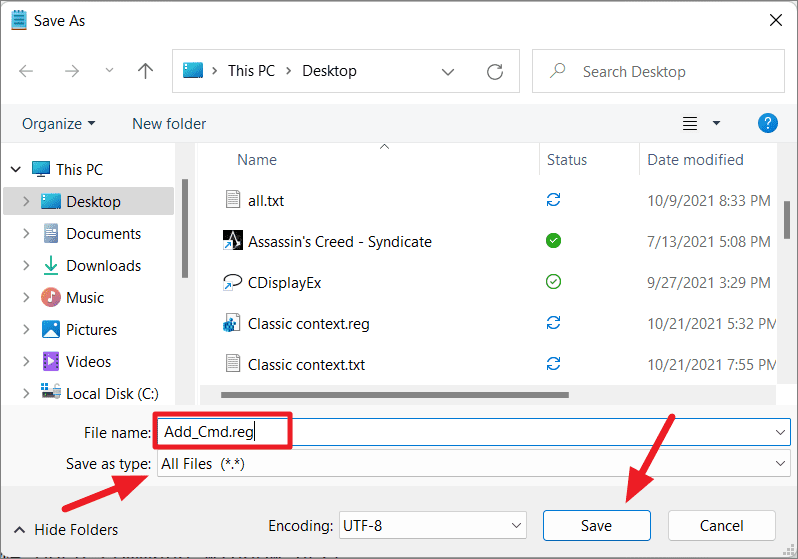
- Double-click the saved
.regfile and confirm any prompts to merge it into the registry.

The context menu will now include the Open command window here option.
Add "Open Command Window Here as Administrator" to the Context Menu
To open Command Prompt with administrative privileges directly from a folder's context menu, you can add another registry entry:
- Save the file with a
.regextension (e.g.,AddAdminCommandPrompt.reg). - Double-click the file and confirm any prompts to merge it into the registry.
Open Notepad and paste the following code:
Windows Registry Editor Version 5.00
[HKEY_CLASSES_ROOT\Directory\shell\OpenCmdHereAsAdmin]
@="Open command window here as administrator"
"HasLUAShield"=""
"NoWorkingDirectory"=""
[HKEY_CLASSES_ROOT\Directory\shell\OpenCmdHereAsAdmin\command]
@="cmd.exe /s /k pushd \"%V\""
[HKEY_CLASSES_ROOT\Directory\Background\shell\OpenCmdHereAsAdmin]
@="Open command window here as administrator"
"HasLUAShield"=""
"NoWorkingDirectory"=""
[HKEY_CLASSES_ROOT\Directory\Background\shell\OpenCmdHereAsAdmin\command]
@="cmd.exe /s /k pushd \"%V\""
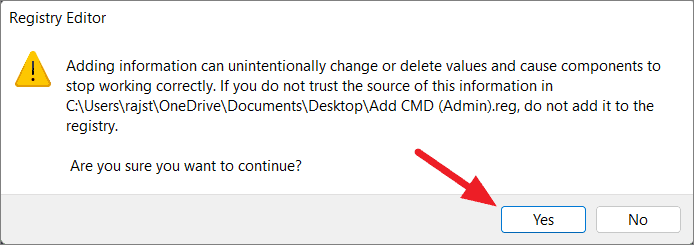
You will now see the Open command window here as administrator option in the context menu.
Open Command Prompt in a Folder Using a Shortcut
To create a shortcut that opens Command Prompt in a specific directory:
- Search for Command Prompt in the Windows search bar.
- Right-click on Command Prompt and select Open file location.
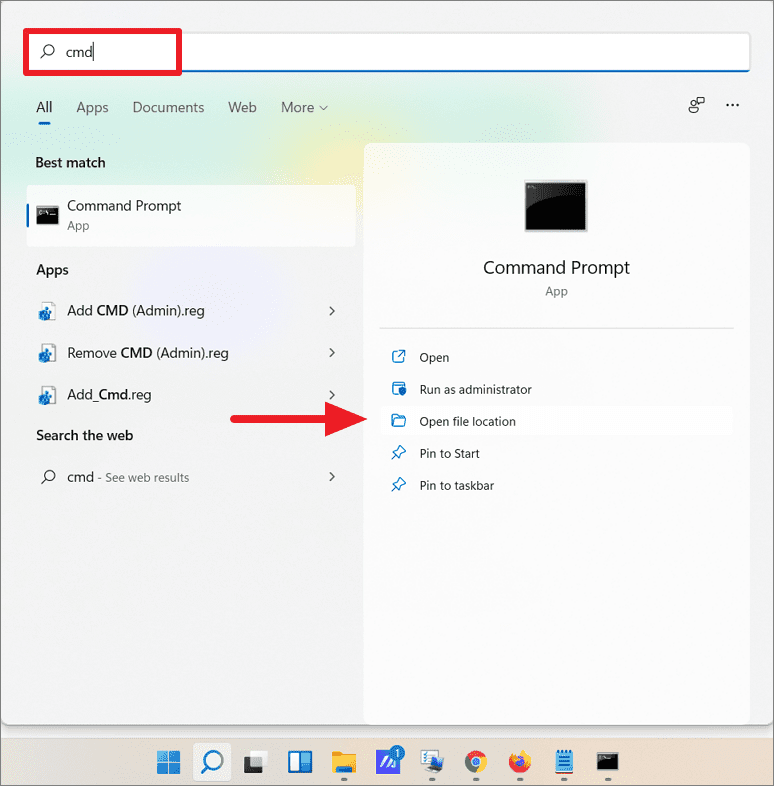
- In the File Explorer window that opens, right-click on Command Prompt and choose Show more options.
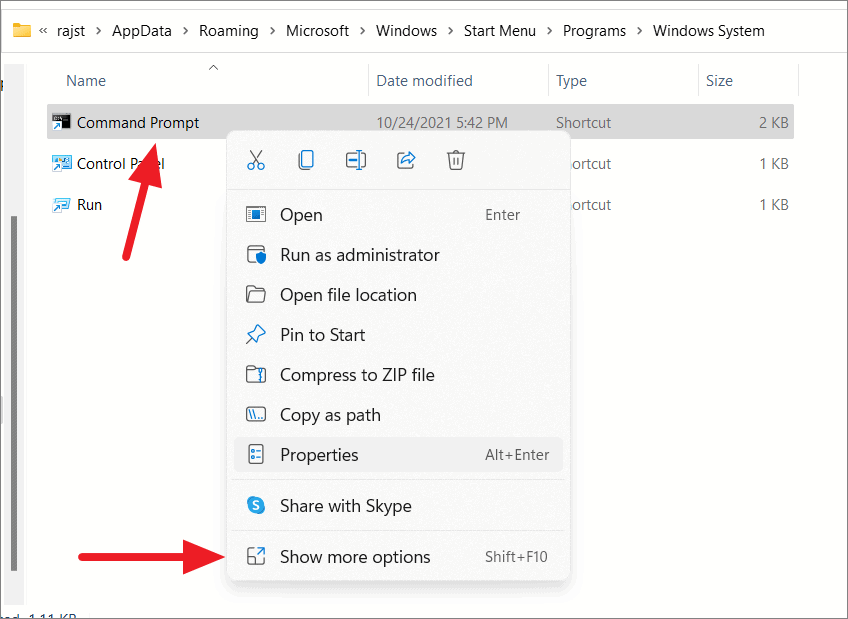
- Hover over Send to and select Desktop (create shortcut).

- On your desktop, right-click the new Command Prompt shortcut and select Properties.
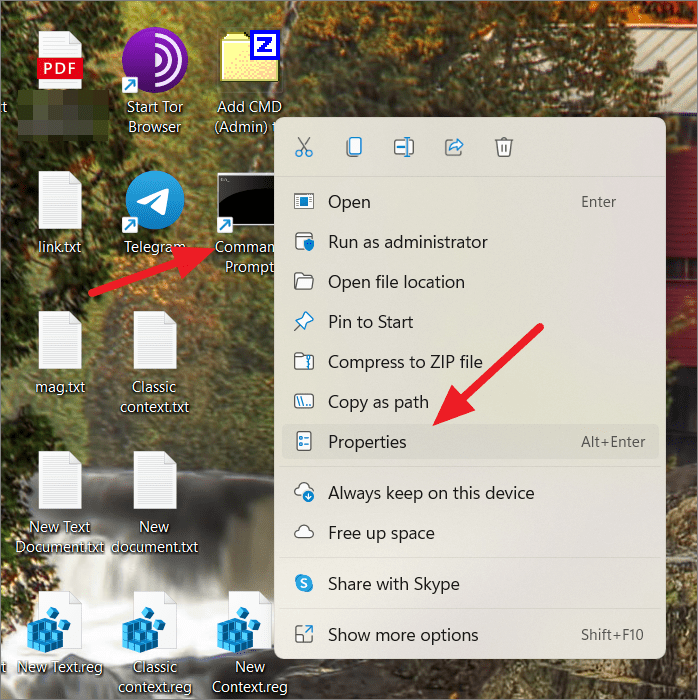
- In the Shortcut tab, locate the Start in field.
- Replace the existing path with the path to your desired folder (e.g.,
F:\Confidential\Blacked). - Click Apply and then OK.
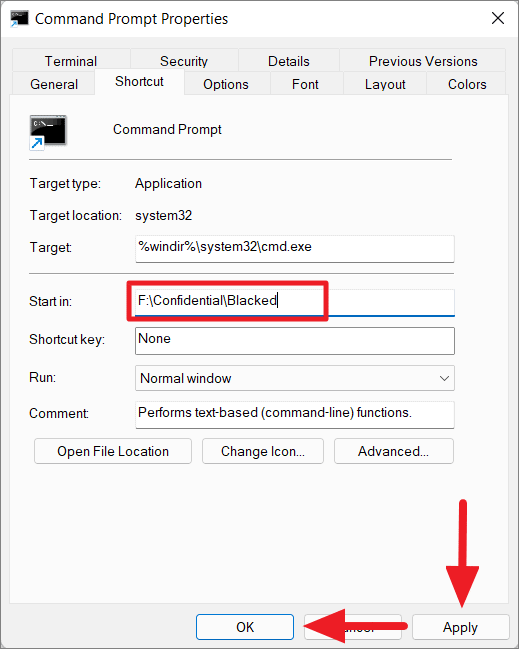
Now, when you double-click the shortcut, Command Prompt will open directly in the specified folder.
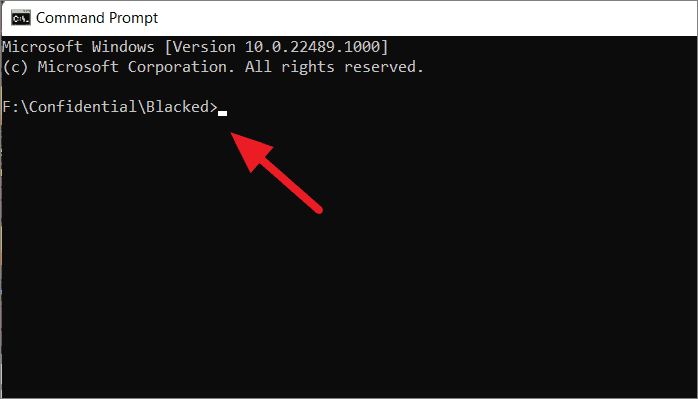
By following these methods, you can easily open the Command Prompt directly within any folder, saving you time and streamlining your workflow.


